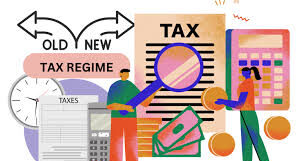As the new financial year 2024-25 commences, salaried individuals will soon receive emails from their employers’ HR or finance departments requesting them to declare their proposed investments for tax purposes. This process involves choosing between the old and new tax regimes, where the selection determines the tax deductions to be claimed under sections 80C, 80D, 24(b), and others. Employers will adjust the tax deducted at source (TDS) based on these declarations.
It’s crucial to exercise caution while making this decision, especially since the new tax regime is now the default option. Failure to clearly indicate your choice will result in your tax being calculated as per the new regime’s rates. However, salaried employees retain the flexibility to switch between the two regimes annually, even at the time of filing their income tax returns in July.
The primary difference between the old and new tax regimes lies in their tax rates and the availability of deductions and exemptions. While the new regime offers lower tax rates, it has fewer deductions and exemptions compared to the old regime. Therefore, individuals must assess their income level and circumstances to determine which regime is more beneficial for them.
To make an informed decision, individuals should calculate their tax liability under both regimes, taking into account their anticipated income, eligible deductions, and exemptions. While the new regime may be advantageous for those with lower incomes or minimal deductions, the old regime might be more beneficial for individuals with higher incomes or substantial deductions.
It’s important to note that once an individual opts out of the new regime, they can only opt back in once, especially for those with business income. However, individuals without business income have the flexibility to choose their regime each financial year.
Ultimately, selecting the right tax regime requires careful consideration of individual circumstances and long-term implications. Therefore, individuals are advised to evaluate their options thoroughly before making their choice.



